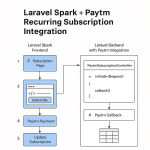Limited Time Offer!
For Less Than the Cost of a Starbucks Coffee, Access All DevOpsSchool Videos on YouTube Unlimitedly.
Master DevOps, SRE, DevSecOps Skills!
Reducing website bandwidth usage is an essential part of website optimization. By minimizing the amount of data your website sends and receives, you can improve the user experience, reduce hosting costs, and potentially improve your website’s search engine rankings. Here are some detailed procedures for reducing your website’s bandwidth usage:
- Optimize your images: Images are usually the largest files on a web page, and they can significantly impact the site’s bandwidth usage. Optimize your images by compressing them and reducing their file size. You can use online tools or image compression software like Adobe Photoshop to optimize your images. Ensure that you maintain a good balance between image quality and file size.
- Use a content delivery network (CDN): A CDN can help reduce your website’s bandwidth usage by delivering your content from the nearest server location to your visitors. This reduces the number of data requests sent to your hosting server, thereby reducing your bandwidth usage. Many CDN providers, such as Cloudflare and Amazon CloudFront, offer affordable plans for small websites.
- Enable caching: Caching stores frequently accessed data on the user’s device, reducing the amount of data that needs to be transferred between the user’s device and the server. Implement browser caching by setting the “Expires” header in the HTTP response. You can also use server-side caching, such as Varnish or NGINX, to cache your website’s pages and serve them faster to your visitors.
- Minimize HTTP requests: Each file request made by the browser, such as images, scripts, and stylesheets, requires a separate HTTP request to the server. Minimize the number of HTTP requests by combining and compressing files, and removing unnecessary files, such as unused CSS and JavaScript files.
- Use Gzip compression: Compressing your website’s files with Gzip can significantly reduce the amount of data sent between the server and the user’s device. Gzip compression can be enabled in your website’s server configuration file or using a plugin or script.
- Optimize your website’s code: Bloated code, including excess HTML, CSS, and JavaScript, can increase your website’s file size and bandwidth usage. Optimize your website’s code by removing unnecessary tags and whitespace, minifying CSS and JavaScript files, and reducing the number of HTTP requests.
- Monitor your website’s traffic: Regularly monitor your website’s traffic to identify any unusual spikes in bandwidth usage. This could be due to malicious traffic, such as a DDoS attack, or other factors that could increase your hosting costs. Use website analytics tools like Google Analytics to monitor your website’s traffic and identify any unusual activity.
List of tools for Reducing Your Website’s Bandwidth Usage
There are many tools available that can help you reduce your website’s bandwidth usage. Here is a list of some popular tools:
- Image compression tools: Online image compression tools like TinyPNG, JPEG Optimizer, and Compressor.io can help reduce the size of your website’s images without compromising their quality.
- Content Delivery Networks (CDNs): CDNs like Cloudflare, Amazon CloudFront, and Akamai can help reduce your website’s bandwidth usage by caching your content on servers located closer to your users.
- Caching plugins: WordPress caching plugins like WP Fastest Cache, W3 Total Cache, and WP Super Cache can help reduce your website’s bandwidth usage by caching your pages and serving them to users from the cache.
- Minification tools: Minification tools like CSS Minifier, JSCompress, and HTML Minifier can help reduce the size of your website’s CSS, JavaScript, and HTML files.
- Gzip compression tools: Gzip compression tools like GzipWtf and Gzip Ninja Speed Compression can compress your website’s files before they are sent to users, reducing their size and your website’s bandwidth usage.
- Website performance testing tools: Website performance testing tools like Google PageSpeed Insights, GTmetrix, and Pingdom can help you identify areas where your website’s performance can be improved, including reducing its bandwidth usage.
- Website analytics tools: Website analytics tools like Google Analytics can help you monitor your website’s traffic and identify areas where bandwidth usage can be reduced, such as identifying and blocking malicious traffic.



